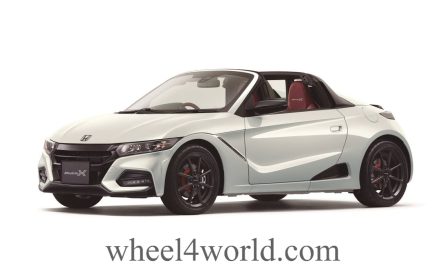The Nissan GT-R R35, often hailed as the “Godzilla car” for its monstrous performance and dominance on the track, has been a staple in the world of supercar legends since its debut. This Japanese engineering marvel turned heads by delivering supercar-killing power at a fraction of the cost of its European rivals. But all good things must come to an end.
In 2025, Nissan officially pulled the plug on the R35 GT-R production, marking the close of an 18-year run that began in Japan in 2007 and expanded globally in 2008. The news sent shockwaves through the automotive community, with fans mourning the loss of a vehicle that redefined what a high-performance car could be. As we bid farewell to this era, let’s delve into the Nissan GT-R’s history, its groundbreaking features, cultural impact, and what the future of the Nissan GT-R might hold.
The Rise of the Nissan GT-R R35
From Skyline Roots to Global Phenomenon
The story of the Nissan GT-R dates back to 1969 with the first Skyline GT-R, a high-performance version of Nissan’s Skyline coupe that dominated Japanese racing circuits. Over the decades, the GT-R badge evolved, with models like the R32, R33, and R34 becoming legends in their own right, especially after appearances in video games and movies. But the R35, introduced at the 2007 Tokyo Motor Show, marked a bold new chapter. It was the first GT-R to drop the “Skyline” name in many markets, positioning it as a standalone supercar.
Launched in Japan in December 2007 and hitting global shores in 2008, the R35 GT-R was designed to challenge the elite. Nissan aimed to create a car that could outperform vehicles costing twice as much, like the Porsche 911 Turbo or Ferrari 458. Its nickname, “Godzilla,” stuck from earlier Skyline models, but truly fit the R35, a beast that devoured lap records and humbled pricier competitors.
Positioning as a Supercar Killer
What made the R35 stand out was its accessibility. Priced around $70,000 at launch, it offered performance that rivaled cars in the $150,000+ range. Early reviews praised its ability to lap the Nürburgring in under 7:30 minutes, a feat that put it in the same league as the Corvette ZR1 or Lamborghini Gallardo. The GT-R wasn’t just fast; it was a statement of Japanese ingenuity, proving that advanced tech could level the playing field against traditional supercar legends.
Key Features and Performance
Heart of the Beast: The VR38DETT Engine
At the core of the R35 GT-R is the VR38DETT, a hand-assembled 3.8-liter twin-turbocharged V6 engine. In its base form, it produces 565 horsepower and 467 lb-ft of torque, but Nismo versions crank that up to 600 hp and 481 lb-ft. This powerplant is a marvel, with plasma-sprayed cylinder bores for reduced friction and titanium exhaust for lighter weight.
Acceleration is blistering: 0-60 mph in about 2.7 seconds for the standard model, dipping under 2.5 in tuned variants. Top speed hovers around 195-205 mph, depending on the trim. On the track, it’s a monster, holding records at circuits worldwide thanks to its balanced chassis and grippy tires.
All-Wheel Drive Mastery and Handling
The GT-R’s ATTESA E-TS all-wheel-drive system intelligently distributes power, sending up to 100% to the rear wheels for everyday driving but shifting to the front as needed for traction. Paired with Bilstein DampTronic suspension, it delivers razor-sharp handling. Braking comes courtesy of massive Brembo calipers, stopping this 3,900-pound beast from 60 mph in under 100 feet.
Comparisons with Supercar Rivals
Stack it against a Porsche 911 Turbo S, and the GT-R holds its own in straight-line speed while costing less. Versus a Ferrari 488, it lacks the Italian flair but offers more usable power in real-world conditions. Even Lamborghinis bow to its lap times. The R35 earned its “supercar killer” rep by embarrassing exotics at drag strips and tracks alike.
Innovations That Made It Special
Transmission and Drivetrain Breakthroughs
The R35 introduced a six-speed dual-clutch transmission, co-developed with BorgWarner, for lightning-fast shifts. Launch control catapults the car forward without drama, making it accessible even for novice drivers.
Aerodynamics and Electronics
Sculpted bodywork generates downforce without excessive drag, thanks to underbody diffusers and a rear spoiler. Advanced electronics like Vehicle Dynamic Control and multi-mode settings (Comfort, Normal, R-Mode) let drivers tailor the experience. The ATTESA system uses sensors to predict slip, adjusting torque in milliseconds.
Tech That Aged Gracefully
Over the years, updates included a larger infotainment screen and refined suspension. While not the flashiest, these innovations kept the GT-R competitive, blending raw power with tech-savvy usability.
Variants and Special Editions
Core Lineup
The GT-R lineup started with the Premium and Black Edition, the latter adding Recaro seats and forged wheels. The Track Edition sharpened handling with stiffer suspension and carbon-fiber bits.
Nismo: The Ultimate GT-R
The GT-R Nismo, introduced in 2013, amps up performance with 600 hp, aero enhancements, and Ohlins dampers. It’s the track-focused king, lapping the Nürburgring in 7:08.
Anniversary and Limited Models
Special editions abound: the 45th Anniversary Gold Edition, 50th Anniversary with retro colors, and the GT-R50 by Italdesign, a $1 million coachbuilt rarity limited to 50 units. For 2024-2025, Nissan released the T-spec Takumi and Skyline Editions in heritage hues like Midnight Purple and Bayside Blue, marking the R35 GT-R’s end of production.
Cultural Impact of the R35
Pop Culture Star
The GT-R R35 exploded into mainstream fame through movies like “Fast & Furious 6,” where it starred in high-octane chases. In video games, it’s a staple in Gran Turismo, Need for Speed, and Forza, letting millions experience its thrill virtually.
Symbol of Japanese Excellence
It embodies JDM (Japanese Domestic Market) pride, showcasing Nissan’s engineering prowess. Tuners love it for its mod-friendly design, upgraded turbos, and exhausts that can push power beyond 1,000 hp.
Global Enthusiast Love
From car meets to online forums, the GT-R unites fans worldwide. It’s underdog story resonates, making it a symbol of achievable supercar dreams.
Why Nissan is Discontinuing the R35 GT-R
Regulatory Pressures
Stricter emissions and noise regulations worldwide sealed its fate. Europe discontinued it in 2022, Australia in 2021, and North America in 2024 due to non-compliance. Japan held out until August 2025, but evolving standards made updates too costly.
Aging Platform and Costs
After 18 years, the chassis is outdated. Redesigning for modern safety and efficiency would require a massive investment, especially with Nissan’s financial challenges.
Market Shifts
Sales dwindled as buyers shifted to SUVs and EVs. Hybrids and electrics dominate trends, and the GT-R’s gas-guzzling V6 doesn’t fit Nissan’s electrification push.
Declining Demand
While iconic, competition from newer models like the Corvette C8 eroded its edge. Production ended with a final Midnight Purple Premium Edition T-spec.
Reaction from Fans and Car Community
The announcement hit hard. On social media, enthusiasts expressed nostalgia: “The final R35 GT-R has officially been discontinued after 18 years #Godzilla,” one user posted, echoing widespread sadness. Many lamented no immediate R36 replacement, with comments like “o7” saluting its end.
Mixed feelings abound; some see it as the close of a pure ICE era, while others worry about electrification. Collectability surged, with final models touted as investments. “It might be a good time to buy a R35 GT-R cuz they’re basically discontinued,” one fan noted. Overall, the community views it as the end of an unbeatable legend.
The Future of the GT-R Lineup
Rumors of the R36
Whispers suggest the Nissan GT-R R36 could arrive in 3-5 years, around 2028-2030. It won’t be fully electric; instead, a hybrid setup blending the VR38 with electric motors for over 700 hp.
Electrification Direction
Nissan is pivoting to EVs and hybrids, as seen in concepts like the Hyper Force. The R36 might share tech with the Ariya SUV, maintaining AWD but adding eco-friendly boosts.
Evolving Legacy
The GT-R will adapt, possibly as a high-tech halo car. While purists miss the raw V6 roar, hybridization could keep Godzilla relevant in a green world.
The GT-R R35 as a Collector’s Item
Rising Values
With production over, R35 prices are climbing. Early models fetch $50,000-$80,000, while low-mile Nismos exceed $200,000. Final editions like the Skyline and T-spec are instant classics, with heritage colors boosting appeal.
Market Impact
Collectors eye it for its history; limited runs like the GT-R50 already command premiums. As scarcity grows, values could rival older Skylines, now worth $100,000+.
Enduring Memory
The R35 will be remembered for democratizing supercar performance. Its blend of tech, power, and affordability ensures it remains a sought-after gem.
Conclusion
The Nissan GT-R R35 leaves an indelible mark on automotive history, from its 2007 launch as a supercar disruptor to its 2025 discontinuation. As Godzilla, it slayed giants, starred in pop culture, and inspired generations of enthusiasts. While its end signals shifts toward electrification, the R35’s legacy of innovation and excitement endures. This isn’t just the close of a chapter; it’s the setup for the next evolution in the Nissan GT-R future. Whether hybrid or beyond, the spirit of the GT-R will roar on, reminding us why it’s one of the greatest supercar legends ever built.


